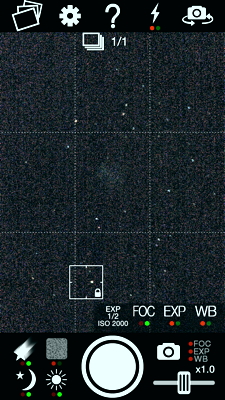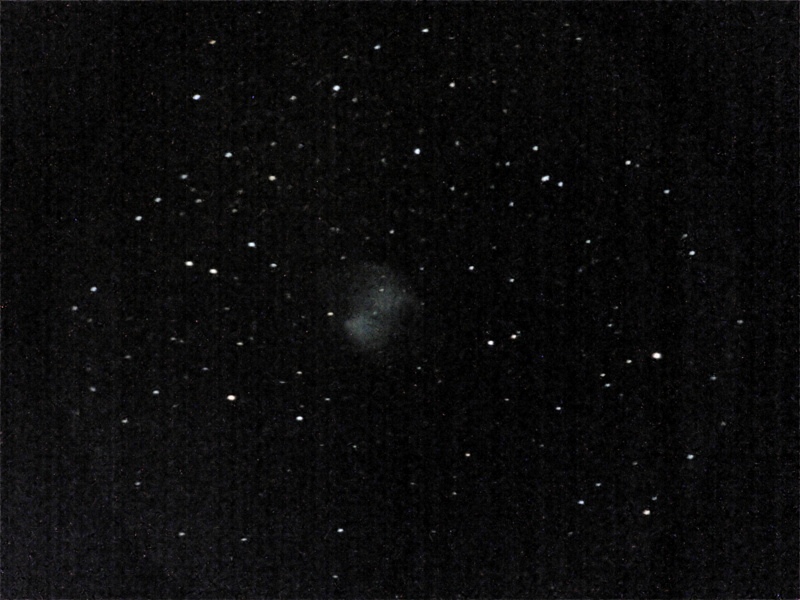iPhone DSO Astrophotography: M13, M27, M11
Posted: 23 November 2014
Clouds returned Thursday afternoon, 20 November. Wouldn't have opened the observatory anyway due to an early morning meeting that I needed to attend the next day as the Chair of the Oracle Dark Skies Committee. Sky mostly cleared about sunset on Saturday, 22 November 2014.
|
Opened: Saturday, 22 November 2014, 1809 MST Temperature: 59°F |
Session: 752 Conditions: Mostly clear with some clouds |
1816 MST: viewed Mars, 83X. Then viewed M27 (Dumbbell Nebula), 83X. Began setting up for iPhone 5s Deep Sky Object (DSO) astrophotography using NightCap Pro (NCP). I had previously captured some excellent iPhone DSO astrophotography with NCP; click to see M57 (Ring Nebula) and the Double Cluster. Mounted the MX-1 Afocal Adapter with a 1.25" 26mm (77X) eyepiece on the 8" LX200-ACF.
1850 MST (4 minutes after end of Astronomical Twilight) slewed to the star Vega. Using NCP I focused the camera on the star and enabled the focus lock in the app. Then slewed to M13 (Great Globular Cluster in Hercules). The cluster was visible on the NCP screen. This full-frame image of M13 was taken using Night Mode, Long Exposure, and Light Boost with a 1 minute exposure setting:

Pretty amazing for a smartphone camera.
Unfortunately, the focus lock automatically disabled after the M13 exposure, so I waited for the image to focus and re-enabled the focus lock. Then went to M27 (Dumbbell Nebula). The camera went out-of-focus so had to wait again for the camera to focus. Once it did M27 was visible on the NCP screen, as seen in this screen shot:

This is M27 (Dumbbell Nebula), Night Mode, Long Exposure, Light Boost, 1 minute exposure:

The full-frame image was processed using Neat Image to remove some digital noise in the nebula.
I tried a 5 minute exposure but the image trailed too much.
1918 MST: clouds in the southwest were getting higher in the sky and by 1932 MST thin clouds were in much of the sky.
1937 MST: slewed to M11 (Wild Duck Cluster) to see how good the view was with it low in the western sky. Looked good, so decided to image it using NightCap Pro on the iPhone 5s. Again using Night Mode, Long Exposure, and Light Boost with a 1 minute exposure, this is the full-frame image that resulted:

The image trailed slightly but still a good photo showing what the iPhone can do using NightCap Pro.
I will be doing more iPhone DSO astrophotography with NightCap Pro. You can see some more of my iPhone astrophotography on my "iPhone Astrophotography" photo album.
|
Closed: Saturday, 22 November 2014, 1957 MST Temperature: 50°F |
|
Comments are welcome using Email. If you are on Twitter you can use the button below to tweet this report to your followers. Thanks.
Cassiopeia Observatory Home Page
Copyright ©2014 Michael L. Weasner / mweasner@me.com
URL = http://www.weasner.com/co/Reports/2014/11/23/index.html
